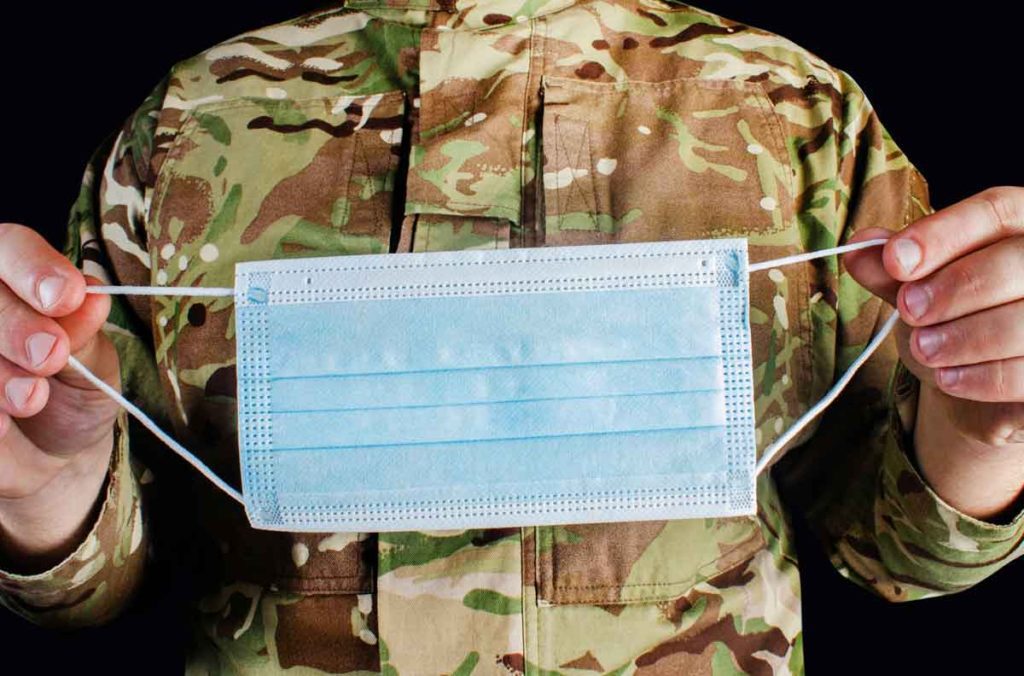Courtesy of The Times of Northwest Indiana • November 12, 2019
Written by Bob Moulesong
Robotic surgery with the da Vinci Surgical System was approved by the Food and Drug Administration in 2000. The technique has been rapidly adopted by hospitals in the United States and Europe for treatment of a wide range of conditions.
The most widely used clinical robotic surgical system includes a camera arm and mechanical arms holding surgical instruments. The surgeon controls the arms while seated at a computer console that provides a high-definition, magnified, 3-D view of the surgical site with the help of other team members.
“Robotic surgery is an advanced technology that provides better visualization with magnification in addition to precise fine control of surgical instruments,” explained Dr. Walid Khabbaz, cardiothoracic surgeon at Porter Regional Hospital. “It does not replace, but rather enhances, good surgical techniques.”
Khabbaz performs thoracic procedures on chest organs and tissues such as lungs, chest wall, and mediastinum.
There are various generations and models of da Vinci robotic systems. The model being used mainly for thoracic surgery at Porter is the da Vinci XI Surgical System, which enhances a surgeon’s techniques. “A highly skilled surgeon has to undergo additional training on the robotic system components and functions,” Khabbaz said. “That includes optimal ports’ and instruments’ positioning and usage, and important safety aspects of using the system, as well as being prepared to address emergencies.”
Khabbaz added that surgeons need to spend additional time on simulators and live lab courses to develop system skills. “They should watch live cases and be mentored by an experienced surgeon for the first few cases,” he said.
Khabbaz explained that Porter offers wide range of robotic surgical procedures. “Several surgeons are actively performing procedures including general surgery, colon/rectal surgery, OB-GYN, urology, and thoracic surgery,” he said.
“Patients typically have less pain and recover much faster after having robotic surgery,” said Dr. Manoj Rao, urologist and surgeon at Methodist Hospitals. “Patients also have less blood loss and much smaller scars than with traditional surgery.”
“The robot device consists of a console where the surgeon sits and a patient cart to which the instruments and camera attach,” Rao said. At the console, the surgeon sees a 3-D view of the inside of the patient and can adjust lighting and the camera angles while controlling the instruments.
Urologists most commonly use robotics in prostate cancer surgery. “In the past, urologists used to make an incision from below the belly button down to the pubic bone and, through this larger incision, remove the prostate,” Rao said. The position of the prostate in a very small space in the pelvis makes visibility challenging and limits access to it, Rao said. “Using the robot, we get much better views of the prostate with less blood loss, quicker healing, and less pain after surgery.”
Other surgeries performed with da Vinci include reconstructive surgery on the ureter, pelvic prolapse repair in women, and the removal of kidney and bladder cancers. “The robot allows us to do finer movements with versatile instruments to perform these surgeries successfully,” Rao said.
Dr. M. Nabil Shabeeb, medical director of robotic surgery at Community Hospital in Munster, was the first in Indiana to perform single-incision surgery with the da Vinci Si to remove a gallbladder in March 2012.
“Robotics enable the surgeon to perform numerous other procedures with minute precision, such as colon resection and bowel surgery, removal of uterus fibroids, reversal of tubal ligation, and mitral valve repair,” said Shabeeb. “Mitral valve repair was previously thought to be unattainable using conventional methods.”
Shabeeb said the use of robotics in the operating room allows pinpoint accuracy. “The improved visibility through a 3-D lens system magnifies the surgical field,” he said.
“The robot is advantageous for several minimally invasive gynecologic surgeries,” said Dr. Douglas Dedelow, an OB-GYN specialist. The Single-Site da Vinci system at St. Mary Medical Center in Hobart enhances maneuverability of the surgical tools, which “is advantageous for several minimally invasive gynecologic surgeries,” he said.
St. Mary Medical Center has been designated by the Surgical Review Corp. as a Center of Excellence in Minimally Invasive Gynecology as well as a Center of Excellence in Robotic Surgery.
“The reviewers come in and look at our practices and help to guide us on standardizing every part of the patient experience,” Dedelow said. “This makes it more efficient, safer for the patient, and continuously improves outcomes.”
Dr. Lisa Hendricks is an OB-GYN and surgeon with Franciscan Alliance in Michigan City. “Surgeons must hold privileges in the open traditional version of the robotic procedure,” she said of the training need to use robotics in the operating room. “Then they have a period of case observation of the robotic procedures and online, computer-based training.”
“After they complete case observations and online training, surgeons must attend (a Food and Drug Administration)-approved eight-hour hands-on course for robot training,” Hendricks said. This live lab is followed by three to five cases with robotic assistance while a certified robotic surgeon oversees the procedures, she said. A period of focused review of all robotic cases follows for the first year of use.
At Franciscan, robotics are used for bariatric procedures such as laparoscopic gastric bypass proximal, laparoscopic cholecystectomy, laparoscopic repair of initial or recurrent inguinal hernia, and laparoscopic repair of ventral hernia with or without mesh.
OB-GYN procedures include hysterectomy with or without removal of fallopian tubes, ovarian cyst removal, myomectomy, removal of ovaries, and endometriosis resection.
“If a surgical procedure is being contemplated, explore the use of robotic assistance,” Hendricks said. “Robotic surgery is not for everyone, but it can mean the difference between a large incision versus a more minimally invasive procedure. Make sure your surgeon offers this technology and is proficient in robotics with a high volume.”



